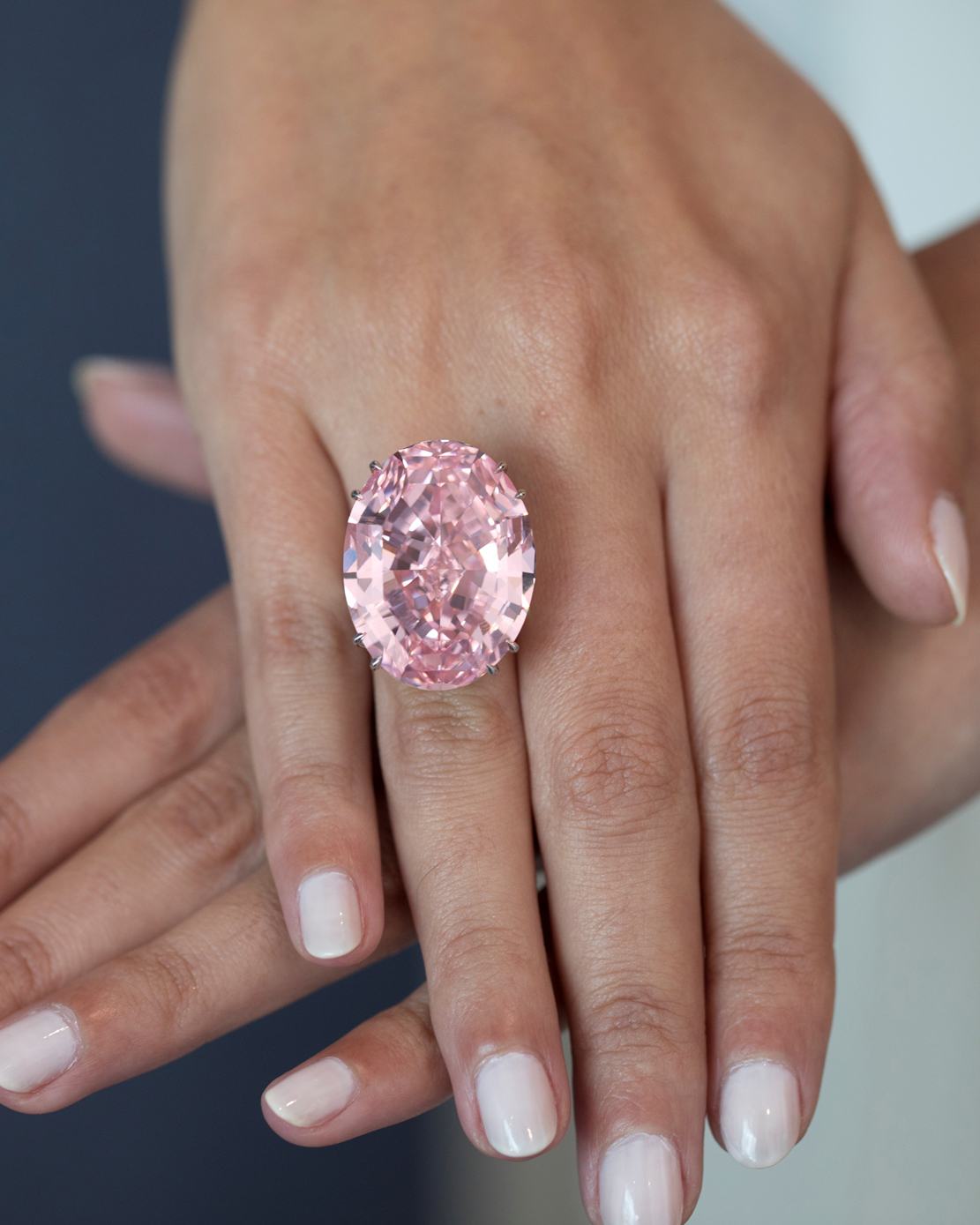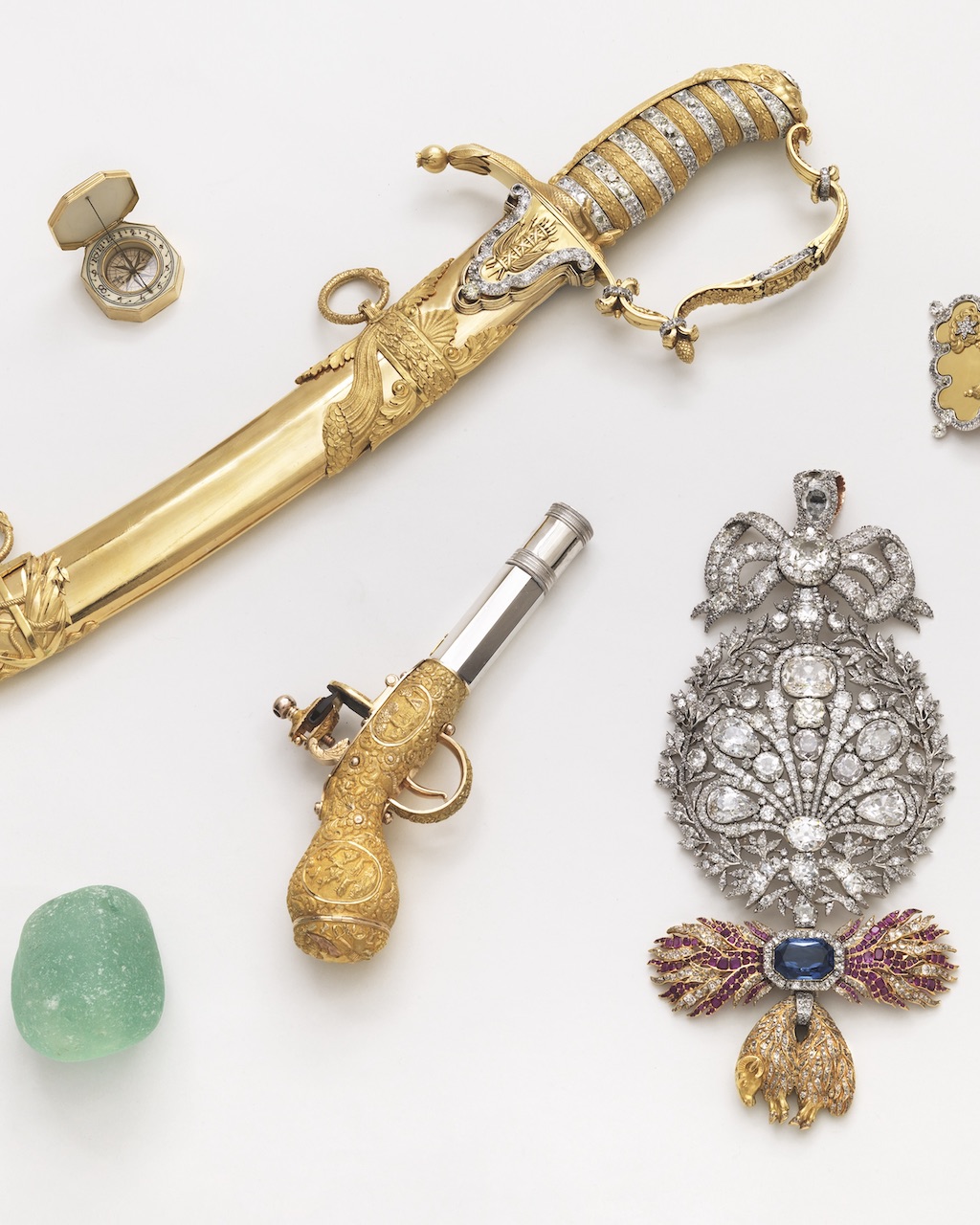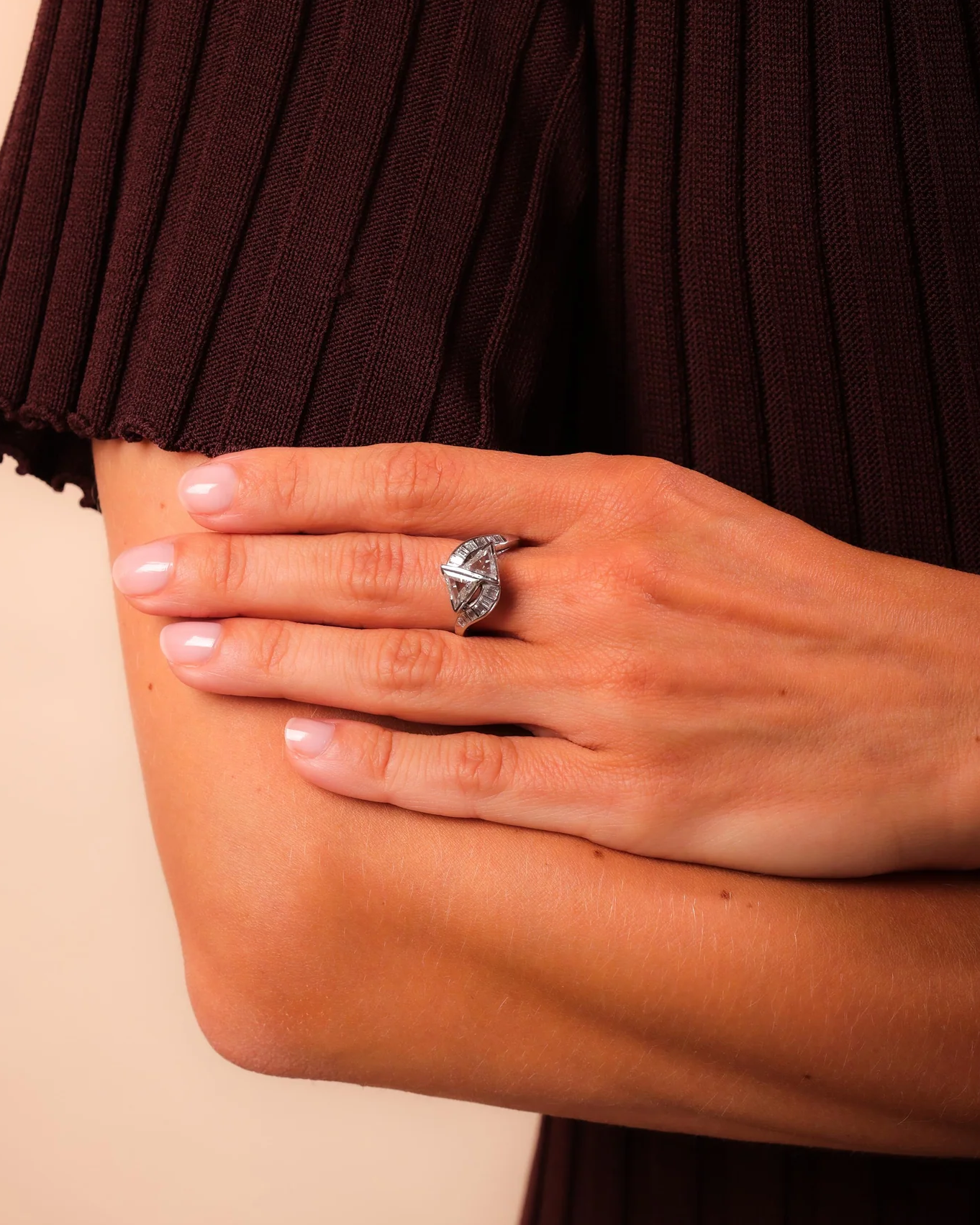The Sancy Diamond’s Scandalous and Storied Past
The Sancy Diamond was owned by kings and queens, stolen, pawned, and even swallowed by a loyal servant.
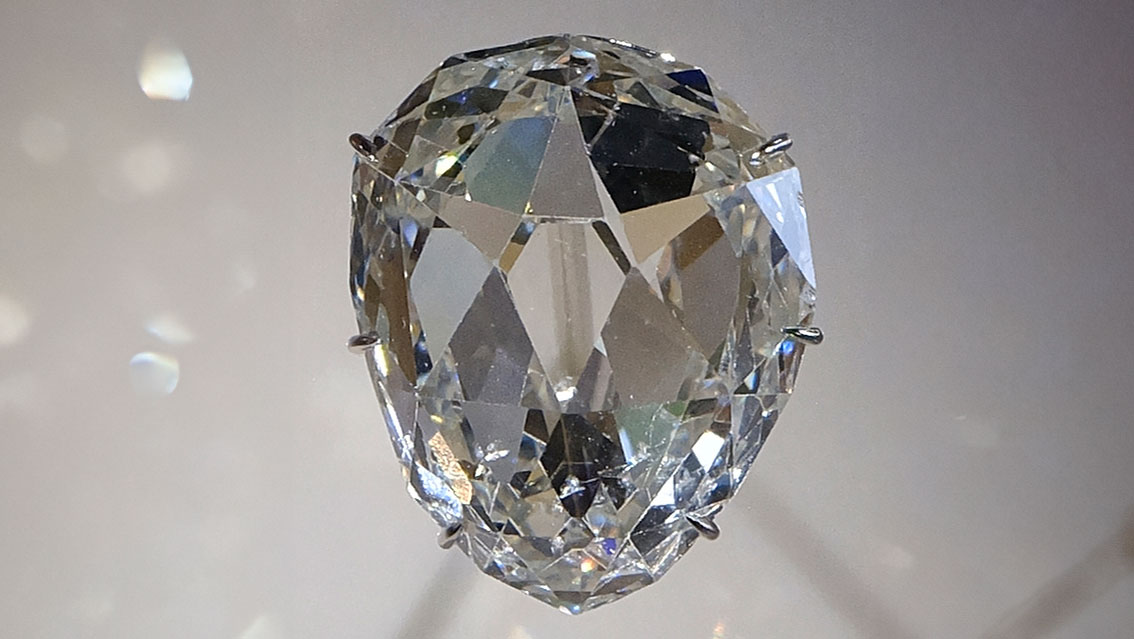
The Sancy Diamond a 55.23-carat pale yellow gem famed for its pear-shaped cut and storied royal past. (Wikimedia Commons)
The Sancy diamond’s long and scandalous saga is like a thriller movie. It can be traced back to Charles the Bold and France’s Louis XVI, it was pawned to finance wars, stolen more than once, vanished and miraculously reappeared years later, and a loyal servant swallowed the stone rather than forfeit it to thieves. It was later removed from his cadaver.
Meet the Expert

- Jill Newman is a jewelry authority, editor, and storyteller with over 25 years of experience, having reported from diamond mines in Africa, cutting workshops in India and Belgium, and ateliers around the world.
- She serves as Editor-at-Large for the Natural Diamond Council, with additional bylines in The New York Times, Town & Country, Elle Décor, and Robb Report.
The Sancy is among a handful of famous diamonds whose legendary histories hardly seem plausible, and yet these tales have been passed down and documented for centuries. What’s most astounding is that the Sancy – a pale yellow pear-shaped diamond about the size of a strawberry– has been tracked for more than 500 years.
Ahead, discover the scandalous backstory of the legendary Sancy Diamond.
What Is the Sancy Diamond?
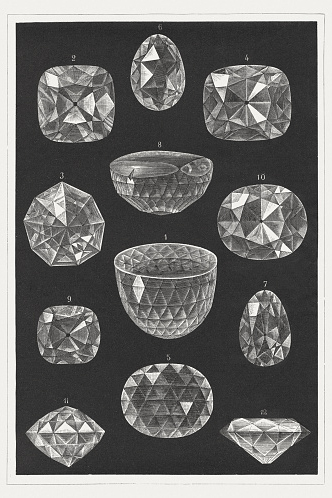
The Sancy diamond is one of history’s most storied gems—a 55.2-carat pear-shaped diamond with a pale yellow hue and an even more colorful past. Likely discovered in the diamond-rich mines of India, it eventually found its way into the hands of kings, ministers, and aristocrats, playing a supporting role in some of Europe’s most dramatic power struggles.
Its appeal isn’t just in its beauty—though the soft yellow tone and elegant silhouette are striking—but in its journey: passed between royals, pledged to fund wars, and even swallowed to keep it from falling into the wrong hands. Today, it is safely ensconced in the Louvre Museum in Paris, where anyone can see it.
The Origin of the Sancy Diamond: From India to European Royalty
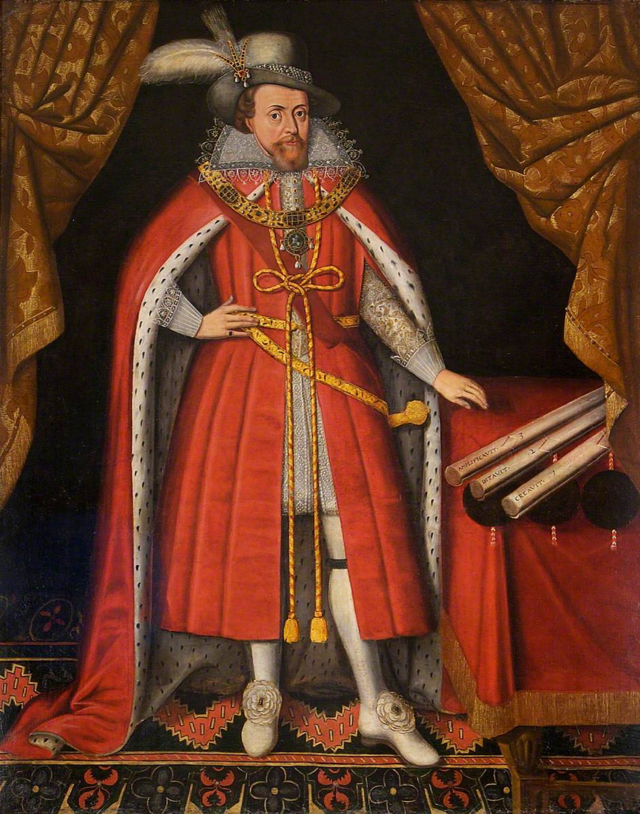
The Sancy was likely discovered in India, the world’s earliest source of important diamonds. It was believed to be owned Charles the Bold, Duke Burgundy, and when he died in 1495 it was passed on to his cousin, King Manuel I of Portugal. Decades later when the King’s grandson and heir, Dom António, was threatened by the Spanish, he fled with the crown jewels and sold them to fund his fight to regain the throne.
The diamond was sold to Nicolas de Harlay, Seigneur de Sancy, for which the stone was ultimately named. This diamond is not to be confused with Le Beau Sancy, a smaller 36-carat diamond, which documents show he also purchased.
How the Sancy Diamond Funded Monarchs
When Henri IV came into power, he named Seigneur Sancy as the Minister of Finance. The savvy financer used his own large diamond repeatedly as collateral for loans to raise money for Monarch’s lavish lifestyle. Over time Sancy’s own appetite for beautiful gems left him broke, and records show that he sold the stone to King James I in 1605.
When Sancy’s servant was on his way from France to England to deliver the stone, he was held up by thieves and rather than forfeit the diamond, he swallowed it. The poor man was killed anyway, and the stone removed from his body.
The Disappearing Act: How the Sancy Diamond Vanished—and Returned

Like the French, the British monarch also lived beyond his means. King James I pawned the diamond, reclaimed it, and pawned it again for cash. In 1654, after passing through the hands of several ill-fated royals, the stone was back in French Crown Jewels until the French Revolution. The Sancy was stolen along with the Hope diamond and Regent Diamond.
In 1828, remarkably it reappeared, and documents show that Russian Prince Demidoff purchased it and passed it down his son, Paul. On his wedding night in 1836, he gave his wife the diamond as a gift. In 1867, the Sancy resurfaced this time at the Paris Exposition in the cases of the French jeweler, M.M. Bapst, who sold it to the Indian prince, Sir Jamsetjee Jeejeebhoy. There are conflicting reports of the stone’s whereabouts over the next few decades, but in 1906, William Waldorf Astor, 1st Viscount Astor, bought the Sancy as a wedding gift for Lady Astor, who wore it on a tiara.
The Sancy Diamond Today:
A Priceless Museum Treasure
The Sancy stayed safely in the Astor family for the next 72 years. In 1978, the family sold the diamond to the Louvre for $1 million, a hefty sum at the time. Of course, based on comparable sales, a stone of this color and quality would sell in the neighborhood of $10 million at auction today.
Is the Sancy Diamond Cursed?
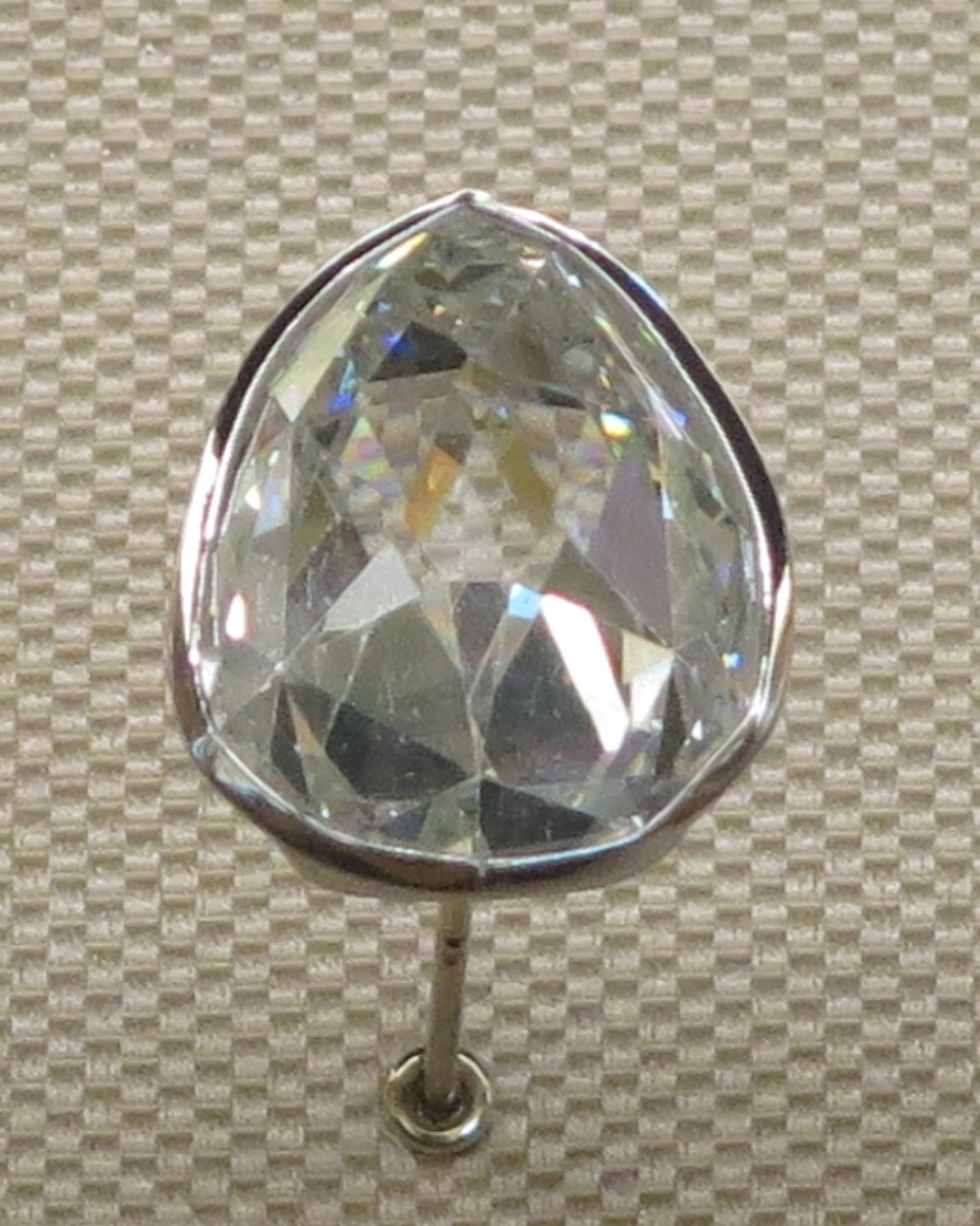
With a past steeped in mystery, misfortune, and high-stakes betrayal, it’s no surprise that some have whispered about a curse surrounding the Sancy diamond. After all, this is a gem that’s been swallowed whole to avoid theft, pried from a servant’s cadaver, and traded between monarchs whose reigns often ended in turmoil—or worse.
While the Sancy doesn’t carry the same infamous reputation as the Hope Diamond, its history is threaded with enough drama to inspire superstition. Nearly every royal or noble who owned the Sancy suffered financial ruin, political collapse, or personal tragedy. Even the diamond itself vanished without a trace—more than once—only to resurface in the most unlikely of places.
But perhaps what gives the Sancy its enduring power isn’t a curse, but a kind of mythic magnetism. It draws in those who crave beauty, status, and legacy—and leaves behind a trail of extraordinary stories that have captivated generations. Call it cursed or charmed, the Sancy remains one of the most enigmatic natural diamonds in history.
In fact, the Sancy isn’t even considered a top-quality fancy colored diamond because it’s a pale shade of yellow as opposed to the more valued vivid yellow distinction. But you can’t put a price on the Sancy’s rich and salacious history. If only that diamond could talk!

